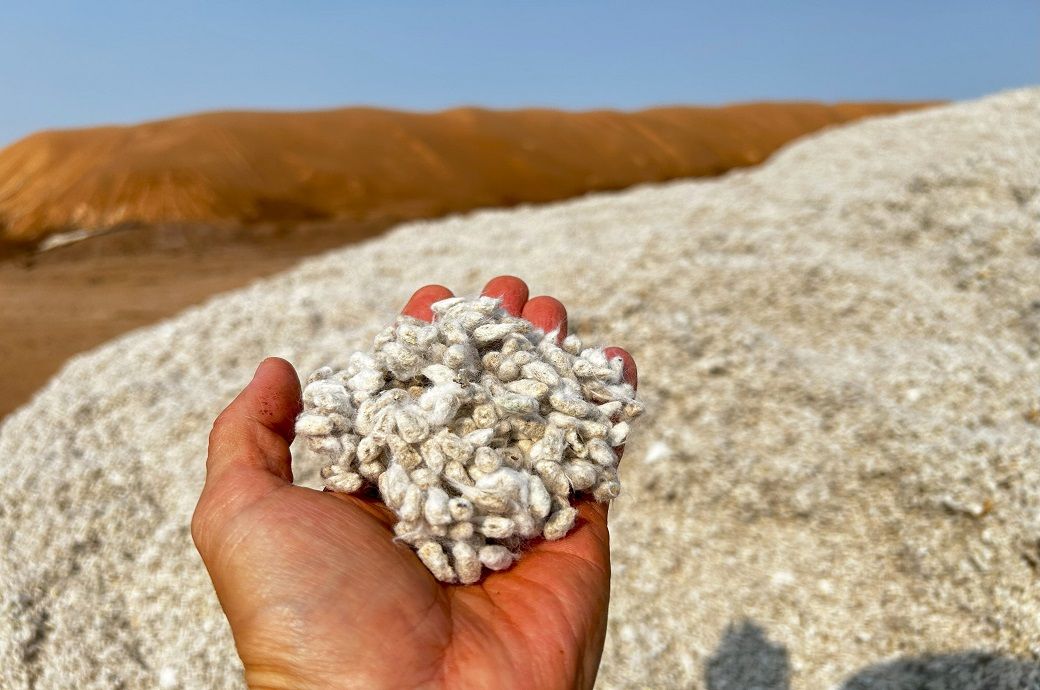
The process for harvesting cotton and creating fabric for textiles includes collecting the wispy cellulose fibres of the cotton boll, removing the cotton seeds interspersed in the fibres, spinning the cotton into yarn, weaving the yarn into fabric and then finishing the fabric with a variety of chemicals that alter its physical properties — for example, making it softer or wrinkle resistant.
Formaldehyde-based resins have traditionally been used as a fabric finishing agent. The sticky resin easily binds to cotton’s cellulose fibres, forming chemical bridges to make the long cellulose fibres resistant to wrinkling or stretching. While formaldehyde is cheap, easy to use and highly reactive, at high concentrations it is considered a Class 1 carcinogen. Formaldehyde can also cause skin and respiratory irritation.?Fluorine-
To eliminate the need for formaldehyde-based resins and PFAS in cotton fabric finishing, a group led by Richard Venditti, a professor of forest biomaterials, paper science and engineering at NC State, set out to create a green alternative by chemically altering seed oil from the cotton plant itself. Drawing on previous research at NC State, Kanipe, Venditti and colleagues took advantage of specific chemical properties in cottonseed oil to insert epoxy groups along the long carbon chains that make up the oil molecules. The epoxide group allows epoxidised cottonseed oil (ECSO) molecules to create strong chemical bonds with the cellulose fibres in cotton fabric and with each other, forming a polymer and making the fabric hydrophobic. The epoxy groups also create oil molecule bridges between the cellulose fibres, making the fabric resistant to wrinkling.
In addition to fabric finishing, ECSO could provide a use for the cottonseed oil harvested along with the cotton fibers, making it as inexpensive, easy to use and effective as formaldehyde resins.
“Epoxidised vegetable oils have a range of applications,” Kanipe explains. “While native cottonseed oil lacks the reactivity of formaldehyde-based resins, this simple epoxidation process produces a safer, more user-friendly alternative for applications like durable press finishes.”
The researchers weighed and chemically analyzed the ECSO-treated fabric using a type of infrared spectroscopy to ensure the ECSO molecules had successfully bonded to the fabric’s surface. To evaluate the finished fabric’s water repellent qualities, the researchers used a high-speed camera to measure the contact angle at which water droplets would interact with the cotton surface. The larger the angle between the water droplet and the surface of the fabric, the greater the water resistance. Untreated fabric showed no contact angle (in other words, the water was fully absorbed into the fabric), while ECSO-treated fabric showed a contact angle of 125 degrees, indicating a significant increase in water-repelling ability.
Future studies will measure additional performance factors in ECSO-treated cotton fabric, including tear strength, durability and wrinkle resistance. The team’s goal is to create a process of treating cotton with an ECSO water emulsion, a green process that does not require hazardous finishing substances.
“If we can achieve our goal of changing the properties of the cotton fabric — making it anti-wrinkle, anti-staining and water-resistant — using a water-based process, we’ll have a green process for putting a bio-based material onto cotton as a replacement for formaldehyde- and PFAS-based finishes,” says Venditti.
This research was funded by Cotton Incorporated and an Agriculture and Food Research Initiative from the US Department of Agriculture’s National Institute of Food and Agriculture.
ALCHEMPro News Desk (RR)
Receive daily prices and market insights straight to your inbox. Subscribe to AlchemPro Weekly!